Naples
Top-Rated Tourist Attractions in Naples
Even if you've been to many Italian cities, nothing prepares you for the exuberant, colorful, and sometimes chaotic hubbub of Naples. The entire population seems to be in the streets that spill down into its harbor, and they're all talking at once. Colors here seem brighter, and aromas of pizza—Neapolitans claim to have invented it—waft through the air, along with operatic areas (everyone here is a tenor waiting to be discovered), laughter, and maybe an argument or two. It's a city that will keep all your senses busy.
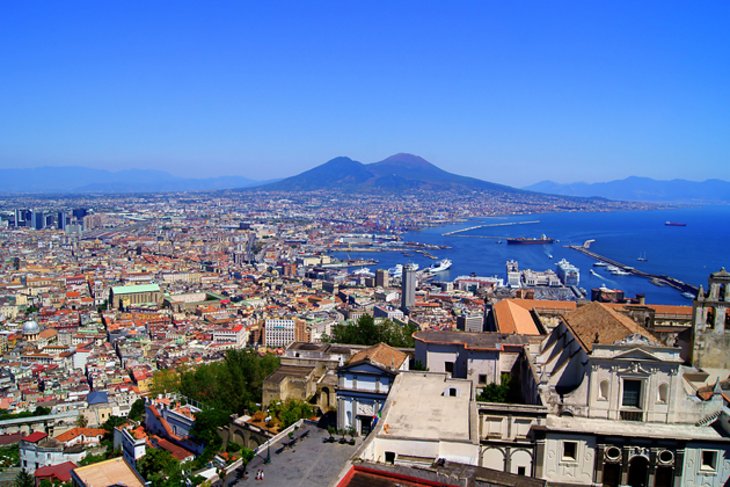
Naples and its harbor
That's not to say it doesn't have a bounty of things to do and attractions for tourists. One of the world's finest archaeological museums holds the treasures of nearby Pompeii, and much more. For centuries, Neapolitans have lavished attention and riches on their magnificent churches, while royalty of several great houses of Europe have decorated its palaces.
The city's long history, dating back to the Greeks in the eighth century BC, included Byzantine, French, Spanish, and Austrian rule, each of which left its mark. And beyond the churches, palaces, and museums, the narrow neighborhood streets, broad promenades, and parks you'll find while exploring Naples are sights in their own right. Find more great places to visit here and nearby with our list of the top tourist attractions in Naples.
1. Lungomare and Castel Ovo
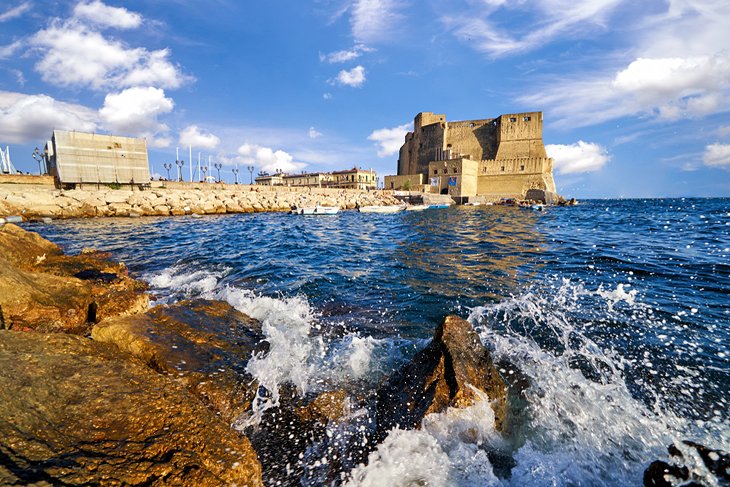
Castel Ovo
Along the waterfront, at the historic gateway to the Mediterranean and the world, you can get a feel for this vibrant city. Naples harbor is divided into separate docks and basins by a series of piers and breakwaters, and is always bustling with activity. The Lungomare is a beach promenade that follows the shore for about 2.4 kilometers along Via Partenope and Via Francesco Caracciolo in the Chiaia neighborhood, with beautiful views across the bay to Vesuvius and plenty of cafés and ice-cream shops. Stroll here, enjoy the views and lively atmosphere, and sample Naples' contribution to food history—margherita pizza.
Sitting on a promontory at the end of Via Francesco Caracciolo is the 12th-century Castel Ovo, the oldest castle in Naples. The views of the harbor, ferries, bay, and Mt. Vesuvius are even better from its ramparts, and inside is an Ethno-Prehistory Museum with ceramics and other artifacts from ancient Naples. There is no charge for admission to the castle and museum, which, like the Lungomare, are among several free things to do in Naples.
Beyond the castle lies the busiest part of the Port of Naples, with the cruise port and departure point for ferries to Sicily, Sardinia, and elsewhere. Farther south, from the quay on the Calata di Beverello, boats sail to Ponza, Capri, and Ischia. Naples is the principal port for southern Italy, and the harbor is its heart.
2. Cappella Sansevero
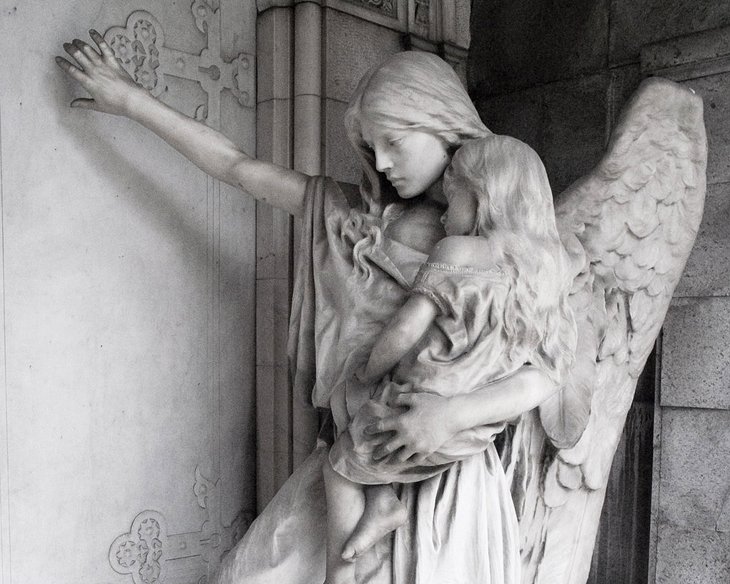
A marble sculpture at Cappella Sansevero | David Sivyer / photo modified
The Cappella Sansevero was built in 1590 as the private chapel of the Sansevero family and later became its burial chapel. In the 18th century, it was elaborately embellished in Baroque style by the eccentric mystic Raimondo di Sangro, Prince of Sansevero. Of the sculptures that he commissioned, the most outstanding artistic features are in the ethereal Veiled Christ by Sammartino (1753) and two others that show the figures draped in what appears to be a translucent tissue of marble. Another, also carved from a single block of marble, shows a male figure partially wrapped in a net, free falling in places and so intricately carved that it seems impossible that it's really made of stone.
The chapel's most unusual exhibits are the pair of Anatomical Machines, demonstrating the human circulatory system and muscles, built on actual skeletons using wire, silk, and beeswax. Needless to say, the Prince's strange collection, added to all the Masonic symbols he incorporated into the chapel, gave rise to dark rumors about him and the scientific experiments he carried out in his adjoining palace.
3. Catacombs of San Gennaro
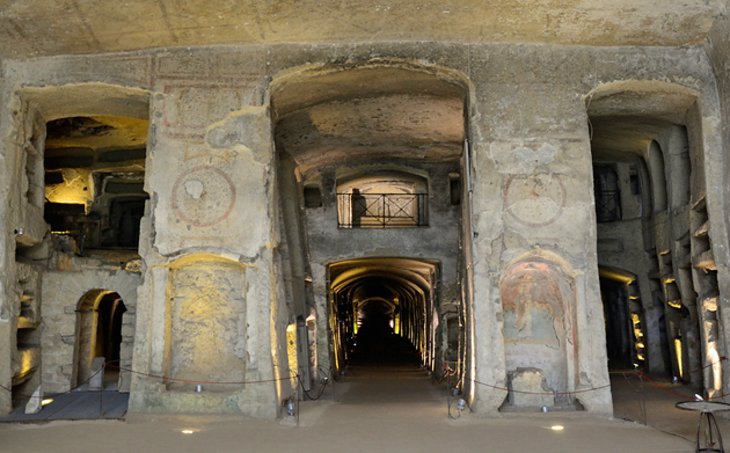
Catacombs of San Gennaro | Rosino / photo modified
The second-century Catacombs of San Gennaro, like the Roman catacombs, are a maze of passages and tomb chambers but are more ambitious architecturally and have finer paintings than their Roman counterparts. There are two levels of these, and in the upper catacomb's vaulting are frescoes from late in the second century. Here, too, is the small Crypt of the Bishops and the large underground basilica, with three naves cut into the stone and decorated with frescoes from the fourth through sixth centuries.
The basilica was built near the catacombs in the fifth century, and although it has undergone several changes, it is a rare example of early Christian architecture. Even after major renovations during the Aragonese era in the 14th and 15th centuries, its basic structure of three naves and a semi-circular apse remains.
4. National Archeological Museum
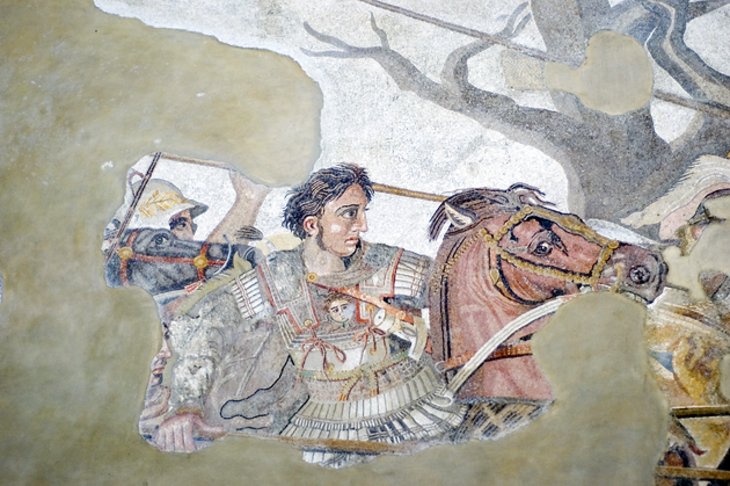
National Archeological Museum
The Museo Archeologico Nazionale holds one of the world's finest collections of antiquities, many of which were brought here from early excavations of Pompeii. In fact, more of the city's artistic highlights are here than at the site itself. In addition, it has the art treasures of the kings of Naples, the Farnese collections from Rome and Parma, the collections from the palaces of Portici and Capodimonte, and material from Herculaneum and Cumae.
The ground floor is devoted mainly to marble sculptures, including the Farnese Hercules, a colossal 3.17-meter statue found in the Baths of Caracalla in Rome, and the Farnese Bull, the largest marble group that has come down from antiquity. On the mezzanine is the collection of ancient mosaics from Pompeii, including the famous 6.20-meter Alexander's Battle.
On the first floor (second floor to Americans), in the central Salone dell'Atlante, is the Farnese Atlas. Here, too, is the collection of bronze sculpture from Pompeii (recognizable by the green oxidation) and Herculaneum (with a dark patina). Look especially for Apollo Playing a Lyre, a 5th-century original from the Peloponnese, found in the Casa del Citarista in Pompeii. Also on this floor is the remarkable collection of ancient wall paintings, mainly from Pompeii but also from Herculaneum and Stabiae. The bronze household utensils and other bronzes, terra-cotta vessels, and a large model of Pompeii are worth seeing, too.
5. Capodimonte Royal Palace and Museum
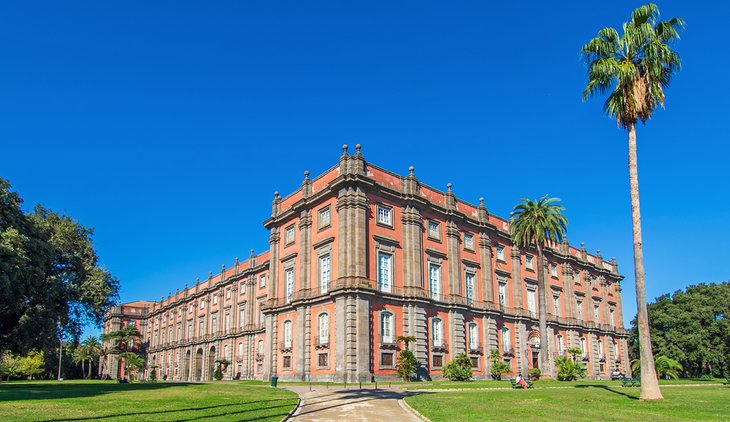
Capodimonte Royal Palace and Museum | Armando Mancini / photo modified
Intended originally as a hunting lodge for King Charles III, the Palazzo Reale di Capodimonte grew to become the royal residence and a place for the king to house the Farnese collection, which he had inherited. The collection includes portraits of members of ruling families by Titian and formed the basis for the National Gallery (Galleria Nazionale), one of the finest art collections in Italy, now housed here. Its more than 500 pictures include, in addition to the Titians, works by Mantegna, Caravaggio, Raphael, Botticelli, El Greco, Bellini, and Neapolitan artists of the 17th and 18th centuries.
In the royal apartments, you'll find furniture, tapestries, and porcelain used in the palace during the Bourbon and Savoy dynasties. The small room, Salottino di Porcellana, is completely lined with porcelain.
In the park that surrounds the palace, which was the royal hunting grounds, King Charles III founded the Capodimonte workshops to produce ceramics. This highly decorative work became quite famous, and you'll see products of the workshop at the convent Santa Chiara. Wander in the beautiful park, along avenues shaded by huge trees, past battered statues and a pond.
6. Galleria Borbonica (Bourbon Tunnel)
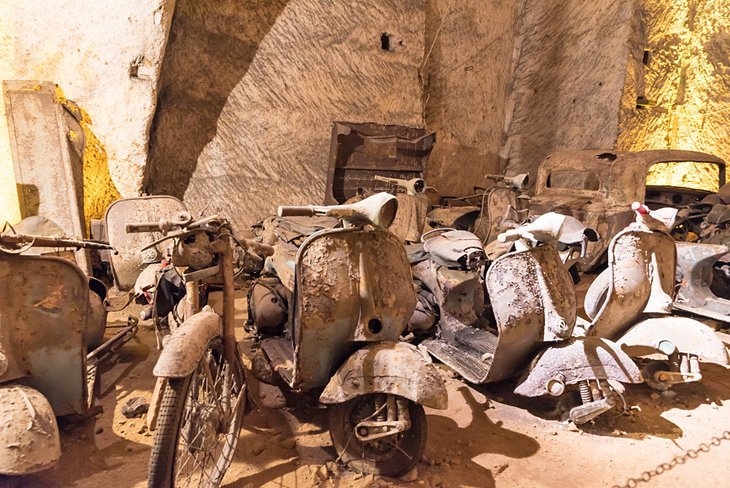
Vespas in the Galleria Borbonica
Definitely one of the most unusual things to do in Naples is exploring the unfinished underground passage known as the Galleria Borbonica—the Bourbon Tunnel. It was begun in the 19th century, on the instructions of King Ferdinand II, as a way for him to escape from the Royal palace to the safety of the military barracks on what is now Via Morelli. It was never finished, but the carved tunnels were later used as an air raid shelter and emergency hospital during World War II.
Access to its huge galleries and spooky tunnels is by tour, during which you can see the cisterns and a variety of relics and debris from its various uses, including old cars, Vespas, motorcycles, and fragments of statuary and architectural detail.
7. Presepi Shops on Via San Gregorio Armeno
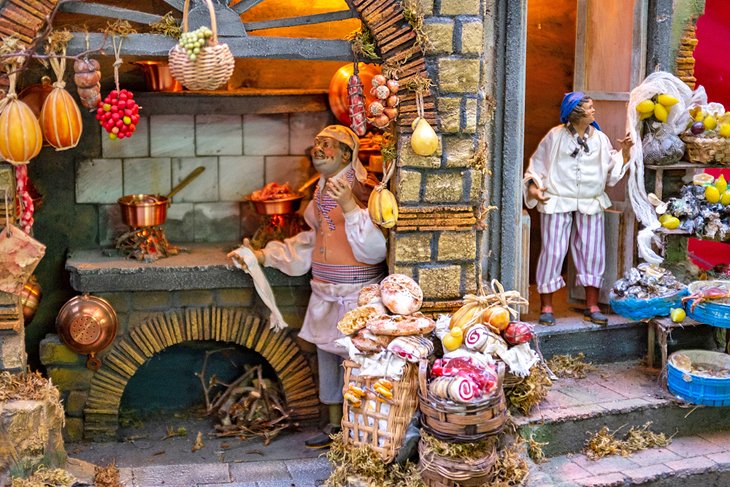
Presepio scene in Via San Gregorio Armeno
If you are looking for souvenirs that are unique to the city, terra-cotta Nativity figures are the best things to buy in Naples. But a stroll along Via San Gregorio Armeno is more than a chance to do some shopping in Naples, it is an experience in local life and culture. During December, you'll find Nativity scenes, called presepi, in churches and public places all over Italy, but nowhere are they so elaborate as in Naples. The best-known craftsmen are here as well, and you will be astonished at the variety and finesse of some of these figures they create.
In Italy these presepi contain far more than the figures central to the night in Bethlehem. You'll find animals, buildings, shops, children, and entire villages of everyday activity surrounding the scenes, made of wood, ceramic, terra-cotta, plaster, and other materials, some dressed elaborately in sumptuous fabrics. Miniature collectors will find tiny furniture, foods, animals, even entire shops and rooms. The most typical of Naples are the figures made of terra-cotta, and you'll find some of the most artistic at the studio of Giuseppe and Marco Ferrigno.
8. Teatro di San Carlo
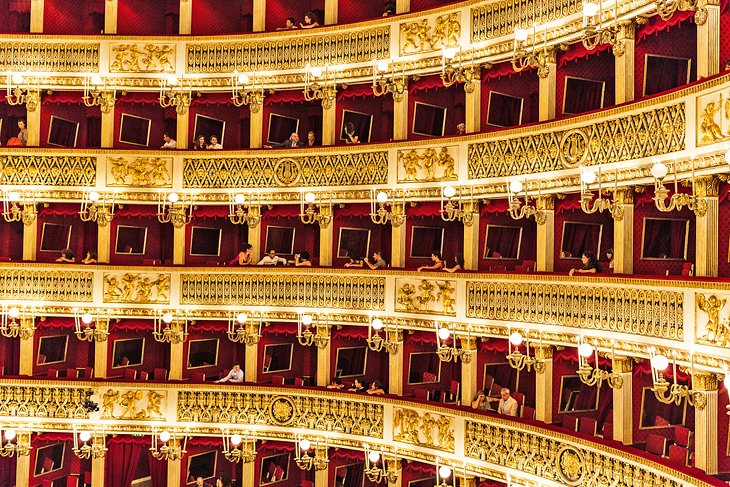
Teatro di San Carlo | Bill Stilwell / photo modified
One of the largest theaters in Europe and one of Italy's premier opera houses, the Real Teatro di San Carlo was built by King Charles of Bourbon, adjoining his Royal Palace. It was completed in 1737, and along with being the oldest continuously active opera house in Europe, it was the model for opera houses everywhere. Six levels of ornately decorated boxes surround the interior, highlighted by the even more lavishly ornate royal box.
In addition to operas, performances include concerts and ballet. Along with its outstanding acoustics, San Carlo has the reputation of attracting the noisiest and worst-behaved audiences in Italy. Woe betides the tenor who misses his high C here.
9. Palazzo Reale (Royal Palace)
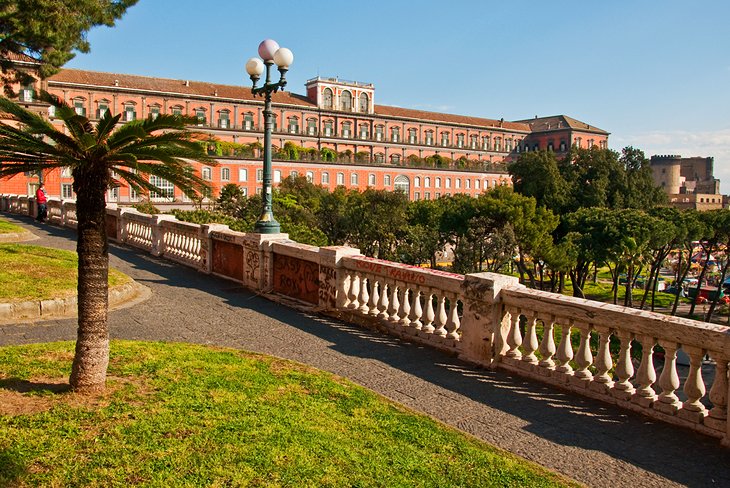
Palazzo Reale (Royal Palace)
Along the east side of Piazza del Plebiscito is the former Royal Palace, begun in 1600 by Domenico Fontana and restored from 1837-41. It is one of four palaces in the area that were used as residences by the Bourbon kings. On the long facade are eight marble statues of the various kings who ruled Naples. Inside, you can see the grand staircase of white marble, built in 1651, a theater, and more than two dozen rooms in its state apartment, with furniture, tapestries, porcelains, and sculptures. It's rarely crowded, inexpensive, and you get a free audio tour. Many tourists consider this one of Naples' most interesting and unsung attractions.
10. Castel Nuovo
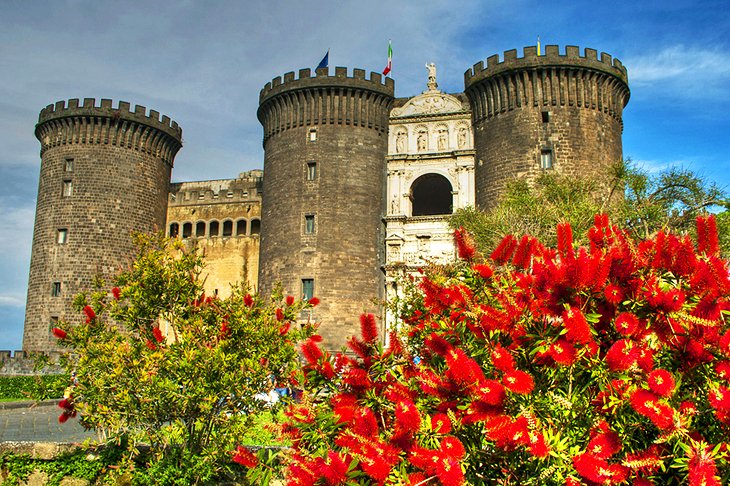
Castel Nuovo
On the south side of the Piazza del Municipio, the five-towered Castel Nuovo, also known as the Maschio Angioino, was the residence of kings and viceroys of Naples. Its history reflects the various rulers—French, Aragonese, Spanish, and Austrian-—each adding and renovating to suit the times.
It was originally built by Charles I of Anjou in 1279-82, and was enlarged by Alfonso I of Aragon, who had the grand Early Renaissance Triumphal Arch between the towers added between 1453 and 1467 to celebrate his victorious entry into the city. Parts of it are used for events and expositions, but the Armoury Hall, the southern courtyard, the Charles V Hall, and the Sala della Loggia are usually open. In the courtyard is the Gothic church of Santa Barbara (or Cappella Palatina).
11. Cathedral
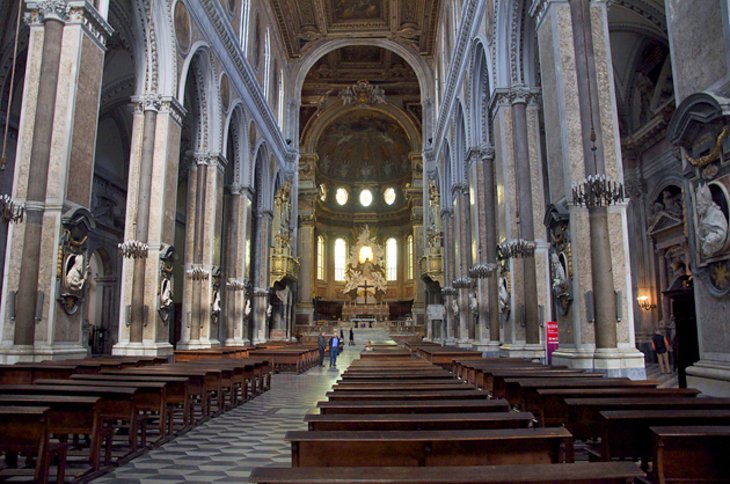
Cathedral
Although dating back to the late 13th century, the cathedral has been altered considerably due to earthquakes and restoration, especially after the one of 1456, but the 1407 doorway in the center of the front has survived. In the south aisle is the sumptuous 17th-century chapel of San Gennaro, patron saint of Naples. On its main altar, a silver bust contains the skull of the saint, who was martyred in 305, in the time of Diocletian. You can see the saint's tomb in the richly decorated Confessio (1497-1506) under the high altar, and in the underground archeological area, you can see the 4th-century Basilica Santa Restituta, the oldest church in Naples, with excellent ceiling frescoes and columns from a Roman temple.
The Archbishop's Palace and several other churches surround the cathedral, among them the Gothic Santa Maria Donnaregina, with fine 14th-century frescoes by Giotto's contemporary Pietro Cavallini in the elevated nuns' choir; the Baroque churches of San Filippo Neri and San Paolo Maggiore; and the restored Gothic church of San Lorenzo Maggiore (1266-1324). Beneath this church, an archaeological site allows visitors to see layer upon layer of civilization: Greek, Roman, Byzantine and medieval.
12. San Martino Monastery and Museum
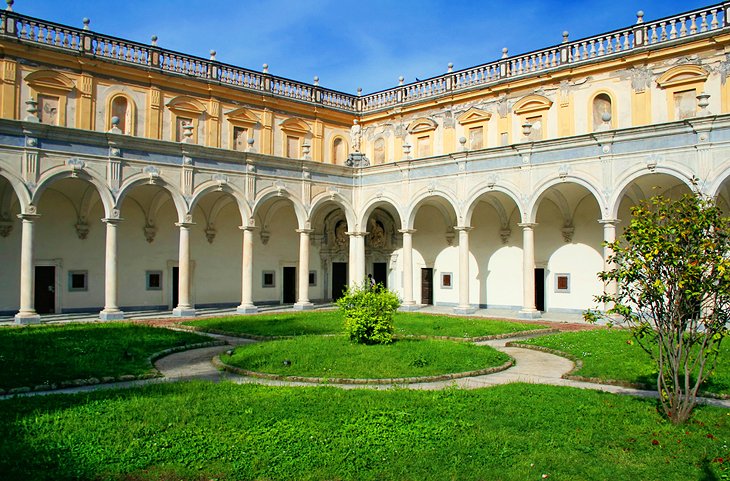
San Martino Monastery and Museum
The former Carthusian monastery of San Martino, built in 1325 and rebuilt in the 17th century, also houses the Museo Nazionale di San Martino. The church, where you should also be sure to see the sacristy and treasury, is richly decorated with marble, ceiling frescoes, and paintings from the 17th and 18th centuries.
There are two cloisters, the Chiostro dei Procuratori and the main cloister, which is surrounded by 60 white marble columns. The monastery makes a good setting for the museum, which contains porcelain, an 18th-century state coach of Charles III's reign, and various historical relics from Naples and southern Italy in the 18th and 19th centuries.
If you're not in Naples during the Christmas season, when most churches are displaying the magnificent Nativity scenes (presepi) for which Neapolitan craftsmen are famous, you'll have a chance to see a collection of them here. It includes the Presepe di Cuciniello, an astonishingly detailed depiction of the Nativity with finely-carved animals, buildings, and figures dressed in intricately ornamented fabric costumes. From the Belvedere, superb views of Naples and its bay extend to Vesuvius and the island of Capri.
13. San Domenico Maggiore
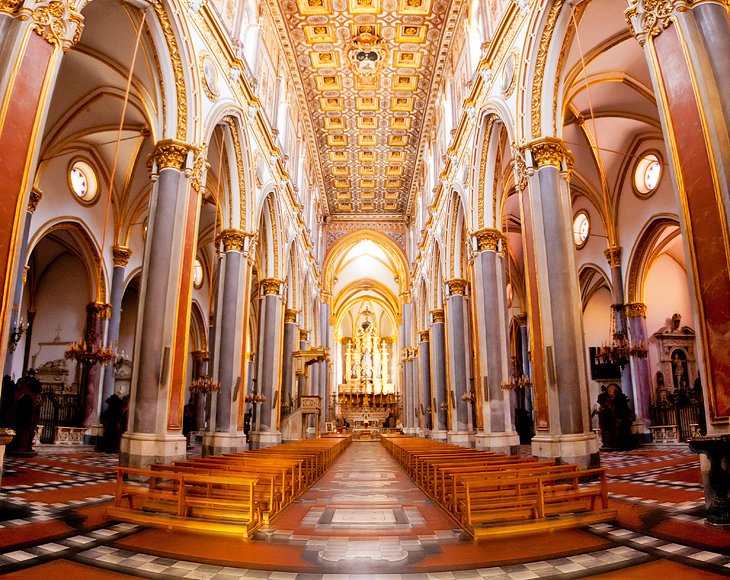
San Domenico Maggiore | Umberto Rotundo / photo modified
San Domenico Maggiore, built about 1300, is among the most beautiful and interesting churches in Naples, filled with Early Renaissance work. The ornate paneled ceiling leads your eyes directly to the high altar by Cosimo Fanzago. Each of its 24-sided chapels contains something of interest, especially the Chapel of San Michele Arcangelo a Morfisa at the end of the right nave, which incorporates a 10th-century church. In the Cappellone Crocifisso are a 13th-century Crucification and the 15th-century Burial of Christ.
Beyond the chapel dedicated to Saint Thomas Aquinas (who studied here) is the sacristy, with a frescoed ceiling, Triumph of Faith over Heresy by the Dominicans, and a gallery of 45 sarcophagi belonging to members of the house of Anjou.
14. Santa Chiara
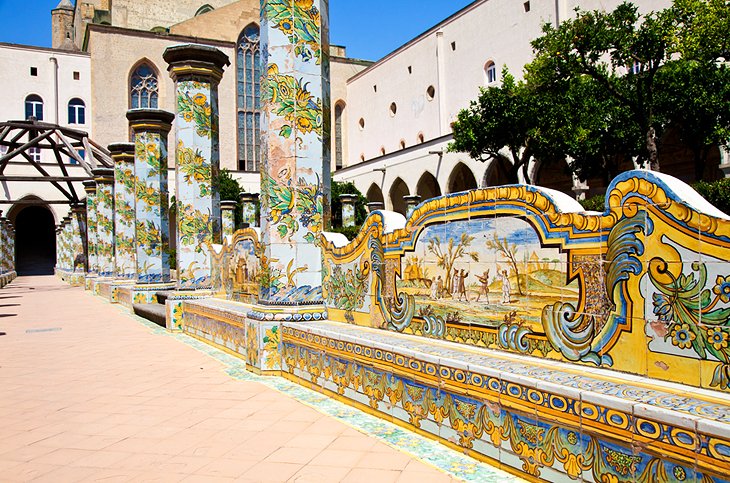
Santa Chiara
The cloister of the Monastery of Santa Chiara, founded in 1310, looks more like a park in a seaside resort town than a solemn retreat for nuns. Majolica tiles made at the Capodimonte workshops, in vivid colors and lively designs, cover the 66 octagonal columns surrounding its cloister, and between the columns are long benches also covered in tiles. These seem to bring the secular world inside the monastery walls, with scenes from everyday life of their period—the mid-1700s. Under the porticos, the walls on all four sides of the cloister are covered with 17th-century frescoes of Old Testament scenes.
There are more reasons to visit Santa Chiara besides its surprising and beautiful cloister. Inside on the right is a presepio (Nativity scene) set in a Roman ruin, incorporating mundane daily Neapolitan life along with the sacred creche scene. The figures are dressed in typical local 18th- and 19th-century clothing. The setting in a Roman ruin is thought perhaps to reflect the intense interest in the discovery of Herculaneum in the early 18th century.
While repairing damage after World War II, the intact remains of a first-century Roman thermal spa were discovered, probably part of a villa. This and other finds from the first through fourth centuries make up a small archaeological area and museum.
15. Santa Lucia
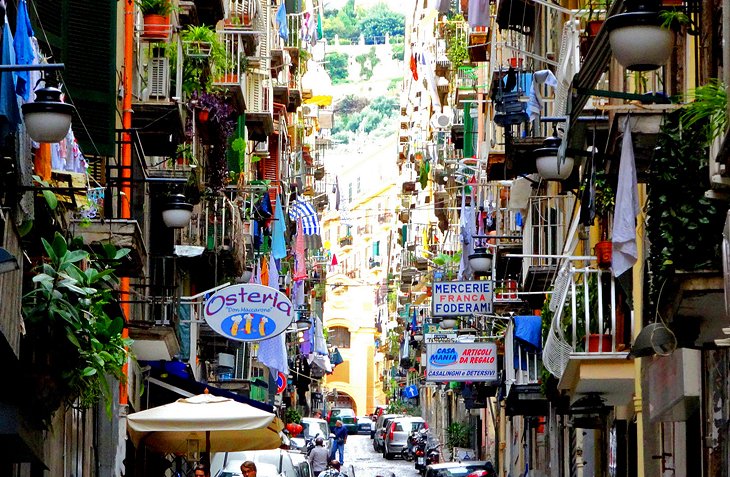
Santa Lucia | David van der Mark / photo modified
To the west of the Piazza del Plebiscito, on the slopes of Pizzofalcone and extending down to the sea, lies the district of Santa Lucia. South of the wide Via Santa Lucia, this is an area of modern streets laid out on a regular plan, but to the north, it is a picturesque huddle of narrow, stepped lanes where you can see—and be part of—traditional Neapolitan life.
It would be a shame to miss this very real neighborhood of shops and bakeries, artisans' workshops, little cafés where locals down their espresso, and streets where children play. Laundry usually hangs overhead, and conversations are carried on between balconies and windows across the narrow streets. It's a colorful place any time of day, but especially lively in the evening, making it one of the favorite things to do at night in Naples.
(thanks to: www.planetware.com)
Comments
Post a Comment